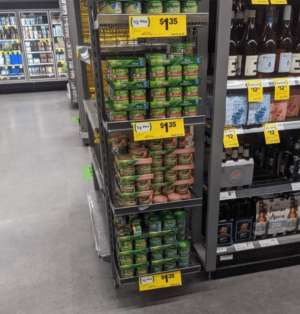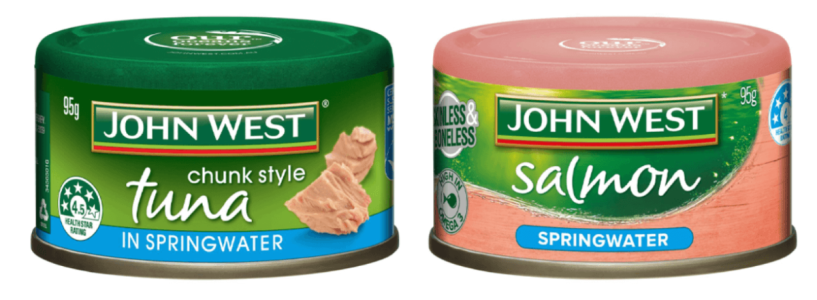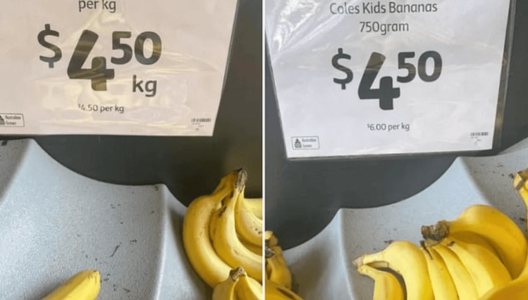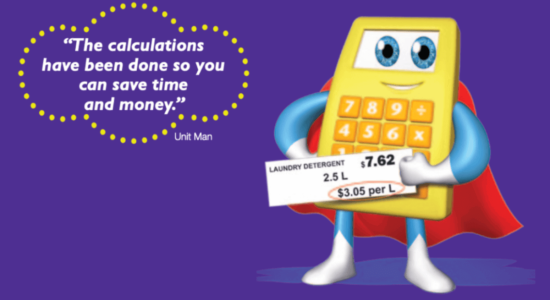Shopper warns of supermarket ‘trick’ to watch out for - can YOU spot it?
- Replies 20
We understand all too well how hard it can be to find a good bargain at the supermarket. Prices have only been on the rise, and grocery store trips are becoming increasingly expensive.
It's absolutely no surprise, then, that shopping around for special prices and deals has become a crucial part of our necessary game of 'how can I save?'.
So when shoppers spy a great deal on staple food items - like half-price tins of tuna - all you can think is 'score!'.
This is why one Woolworths customer was so heartbroken — a little bit angry, even — to discover they had been 'tricked' by the supermarket giant.

As explained in a Reddit post, the shopper had spotted a display of John West tinned fish, which was apparently priced at $1.35 each.
Half-price – amazing!
However, upon closer inspection, the shopper realised they had been duped, as not all tins of fish in the display were half-price.
As it turned out, there was a special half-price offer on the first, second, and fourth shelves only, but the third shelf contained tins of pink salmon without a price tag.
Upon reaching the checkout, the shopper was shocked to learn that the salmon tins were, in fact, full price at $2.60 each.
'Well played, Woolies. You got me,' wrote the shopper. 'Fell for their oldest trick. Sneak the full-priced item into the middle of the sale section. Yeah, I could have left them at the register, but they know, and I knew I would just suck it up.'

When the shopper took to social media to voice her frustration, she unknowingly started a heated debate.
Some were quick to defend the supermarket's staff member, who they believed made an honest mistake when stacking the shelves. Many agreed that it's highly unlikely for a big corporation like Woolworths to plan such schemes. Instead, they pointed out that it was likely a simple case of human error.
While some were sympathetic to the shopper's plight, others also felt that she should have been more vigilant.
They pointed out that the display clearly advertised half-price tuna, not salmon, which had no price tag. It was an easy mistake to make, but the customer should have been more careful and double-checked the price of the ticket before making the purchase.
While not quite the 'dishonest' trick the shopper first assumed, it's still worth being aware of.
Woolworths places a high priority on customer satisfaction and encourages shoppers to report any issues or concerns they may have about products within the store to a team member or the service desk.
By voicing their opinions, customers help ensure that the company maintains its standards of excellence and provides a seamless shopping experience for all.

If you think you've been a victim of a supermarket pricing trick, you're not alone. Other shoppers have had similar experiences, feeling like they might have overpaid if they hadn't been so alert.

In a recent incident at a Coles store, a shopper was on the hunt for bananas. They later noticed that regular-sized bananas were displayed alongside 'Coles Kids Bananas', both priced at $4.50.
But something seemed off, and upon closer inspection, the shopper discovered the small print on the tag. It revealed that the regular-sized bananas were priced at $4.50 per kilogram, while the 'Kids Bananas' were only sold in a 750-gram bunch.
The fine print on the tag disclosed the actual price difference between the two products, which would have gone unnoticed had the shopper not been so vigilant.
It's disheartening to discover that supermarkets sometimes have these 'tricks' up their sleeves, and we have to be so attentive while shopping.
But these incidents remind us that we need to stay alert and read the fine print to avoid any misunderstandings. After all, nobody wants to be tricked into paying more than they intended to.
So, the next time you're at the supermarket, take your time and read the labels carefully to avoid any unpleasant surprises at the checkout.

The good news is that there's an easy way to make sure you're getting the best deal - by checking the unit price!
Unit pricing is a labelling system that's required by law, and it's designed to help shoppers understand the true cost of a product. It shows the price of the product per unit of measurement, such as per litre, gram, or kilogram.
By checking the unit price, you can compare prices of similar products, even if they come in different sizes, brands, or packaging. Unit prices are calculated to the nearest dollar and cent, making it easy for everyone to compare and find the best deal on groceries.
The next time you're shopping, take a moment to look at the unit price and make sure you're getting the best value for your money.
 As conscientious shoppers, it's essential to pay close attention to the details and ensure that we're getting the best value for our money.
As conscientious shoppers, it's essential to pay close attention to the details and ensure that we're getting the best value for our money.
If you ever come across a product that seems too good to be true (or the opposite), we encourage you to double-check before making a purchase. You wouldn't want to be caught off guard at the checkout only to find out that the price was not what you expected.
By being vigilant and checking the details, you could potentially save yourself a significant amount of money and avoid any unnecessary hassle.
So, what do you think? If you have any thoughts or insights you'd like to share with us, please don't hesitate to leave a comment below. We always welcome your feedback and appreciate you joining the conversation!
It's absolutely no surprise, then, that shopping around for special prices and deals has become a crucial part of our necessary game of 'how can I save?'.
So when shoppers spy a great deal on staple food items - like half-price tins of tuna - all you can think is 'score!'.
This is why one Woolworths customer was so heartbroken — a little bit angry, even — to discover they had been 'tricked' by the supermarket giant.

A shopper at Woolworths noticed a 'trick' used by the supermarket that caused her to pay a higher price for a product. Credit: Reddit.
As explained in a Reddit post, the shopper had spotted a display of John West tinned fish, which was apparently priced at $1.35 each.
Half-price – amazing!
However, upon closer inspection, the shopper realised they had been duped, as not all tins of fish in the display were half-price.
As it turned out, there was a special half-price offer on the first, second, and fourth shelves only, but the third shelf contained tins of pink salmon without a price tag.
Upon reaching the checkout, the shopper was shocked to learn that the salmon tins were, in fact, full price at $2.60 each.
'Well played, Woolies. You got me,' wrote the shopper. 'Fell for their oldest trick. Sneak the full-priced item into the middle of the sale section. Yeah, I could have left them at the register, but they know, and I knew I would just suck it up.'

The half-price discount only applies to John West Tuna, while the salmon variant is not included in the promotion. Credit: Woolworths.
When the shopper took to social media to voice her frustration, she unknowingly started a heated debate.
Some were quick to defend the supermarket's staff member, who they believed made an honest mistake when stacking the shelves. Many agreed that it's highly unlikely for a big corporation like Woolworths to plan such schemes. Instead, they pointed out that it was likely a simple case of human error.
While some were sympathetic to the shopper's plight, others also felt that she should have been more vigilant.
They pointed out that the display clearly advertised half-price tuna, not salmon, which had no price tag. It was an easy mistake to make, but the customer should have been more careful and double-checked the price of the ticket before making the purchase.
While not quite the 'dishonest' trick the shopper first assumed, it's still worth being aware of.
Woolworths places a high priority on customer satisfaction and encourages shoppers to report any issues or concerns they may have about products within the store to a team member or the service desk.
By voicing their opinions, customers help ensure that the company maintains its standards of excellence and provides a seamless shopping experience for all.
Key Takeaways
- A Woolworths customer accused the supermarket of deliberately 'hiding' a shelf of more expensive items in between shelves of half-price buys.
- The customer was shocked to discover that the tins of John West salmon in the display were actually priced at $2.60 each, instead of $1.35 like the cans of discounted tuna.
- The shopper's post sparked a debate, with some defending the Woolworths staff member and others claiming the display was deceptive.
- Woolworths customers are encouraged to raise concerns about any item in the store to a team member or the service desk.

A Coles shopper claimed that there's a hidden 'price difference' between the two sets of bananas. Credit: Facebook.
In a recent incident at a Coles store, a shopper was on the hunt for bananas. They later noticed that regular-sized bananas were displayed alongside 'Coles Kids Bananas', both priced at $4.50.
But something seemed off, and upon closer inspection, the shopper discovered the small print on the tag. It revealed that the regular-sized bananas were priced at $4.50 per kilogram, while the 'Kids Bananas' were only sold in a 750-gram bunch.
The fine print on the tag disclosed the actual price difference between the two products, which would have gone unnoticed had the shopper not been so vigilant.
It's disheartening to discover that supermarkets sometimes have these 'tricks' up their sleeves, and we have to be so attentive while shopping.
But these incidents remind us that we need to stay alert and read the fine print to avoid any misunderstandings. After all, nobody wants to be tricked into paying more than they intended to.
So, the next time you're at the supermarket, take your time and read the labels carefully to avoid any unpleasant surprises at the checkout.

By using standard units of measure, shoppers can easily compare the price of products, regardless of different sizes or brands. Credit: ACCC.
The good news is that there's an easy way to make sure you're getting the best deal - by checking the unit price!
Unit pricing is a labelling system that's required by law, and it's designed to help shoppers understand the true cost of a product. It shows the price of the product per unit of measurement, such as per litre, gram, or kilogram.
By checking the unit price, you can compare prices of similar products, even if they come in different sizes, brands, or packaging. Unit prices are calculated to the nearest dollar and cent, making it easy for everyone to compare and find the best deal on groceries.
The next time you're shopping, take a moment to look at the unit price and make sure you're getting the best value for your money.
Tip
If you want to learn more about unit pricing and how it can help you save money while shopping, you can check it out by clicking on this link.
If you ever come across a product that seems too good to be true (or the opposite), we encourage you to double-check before making a purchase. You wouldn't want to be caught off guard at the checkout only to find out that the price was not what you expected.
By being vigilant and checking the details, you could potentially save yourself a significant amount of money and avoid any unnecessary hassle.
So, what do you think? If you have any thoughts or insights you'd like to share with us, please don't hesitate to leave a comment below. We always welcome your feedback and appreciate you joining the conversation!







